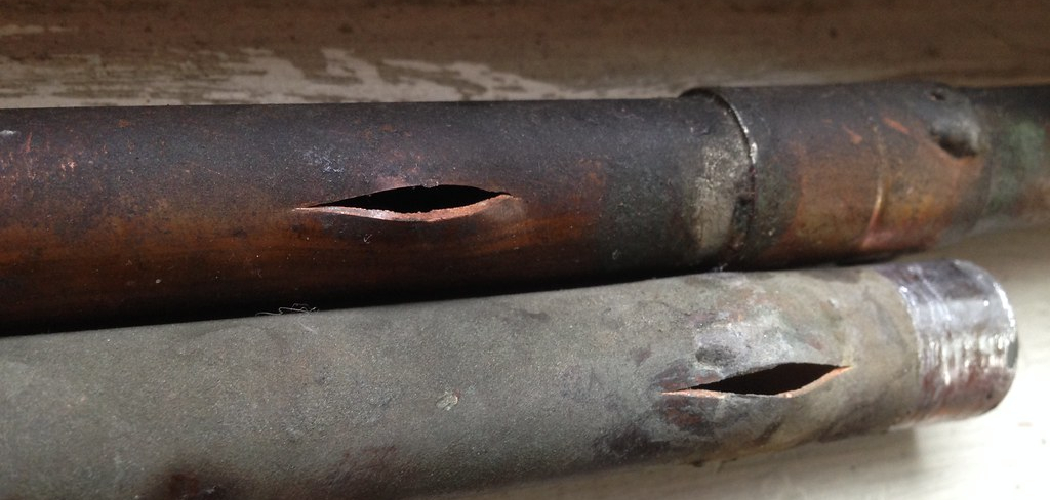Are you planning an extended vacation or going out of town for a while? If so, one of the biggest concerns you may have is the safety and well-being of your home. One potential threat to your property that often goes overlooked is the risk of burst pipes in an empty house.
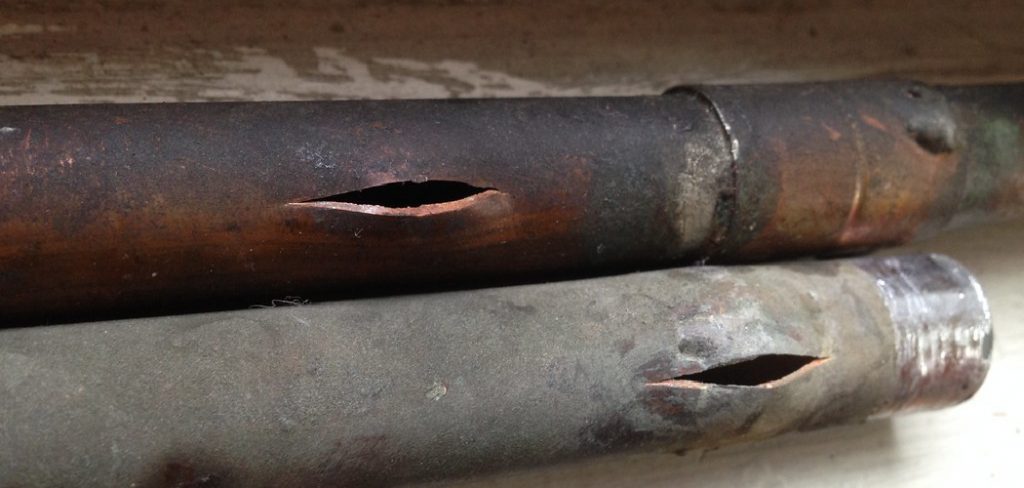
How to prevent burst pipes in an empty homes is crucial for safeguarding your property and avoiding costly repairs. When a house is unoccupied, the risk of frozen pipes increases, especially during colder months. Without the warmth of regular occupancy, water in the pipes can freeze, expand, and ultimately lead to ruptures, resulting in extensive water damage.
This guide will explore practical strategies for homeowners to limit the risks associated with burst pipes, ensuring that your empty property remains protected while you are away.
What Will You Need?
Before taking off on your trip, ensure you have the necessary tools and materials to prepare your home for an extended vacancy. These include:
- Insulation: Appropriate insulation can help prevent pipes from freezing in colder temperatures.
- Heating: Maintaining a minimum temperature of 55 degrees Fahrenheit (12.8 degrees Celsius) inside your home is essential.
- Faucet Covers: These are inexpensive and effective at preventing cold air from entering faucets.
- Pipe Insulation Sleeves or Wrap: These products can protect exposed pipes in unheated areas.
- A Trusted Neighbor or Friend: Enlist the help of someone you trust to keep an eye on your property while you are away. Give them a spare key and instructions for addressing any potential issues.
- A Plumber: In case of an emergency, have the contact information of a reliable plumber on hand.
Once you have these materials, you can begin taking steps to prevent burst pipes in an empty home.
10 Easy Steps on How to Prevent Burst Pipes in an Empty Homes
Step 1. Shut Off the Main Water Valve:
The first and most critical step in preventing burst pipes in an empty home is to shut off the main water valve. This action stops water flow into the house, significantly reducing the risk of leaks or bursts during your absence. Before turning off the valve, ensure that you have emptied the pipes. This can be accomplished by opening all faucets and draining water from toilets and appliances like dishwashers and washing machines. This process minimizes the water left in the pipes, decreasing the chances of freezing.
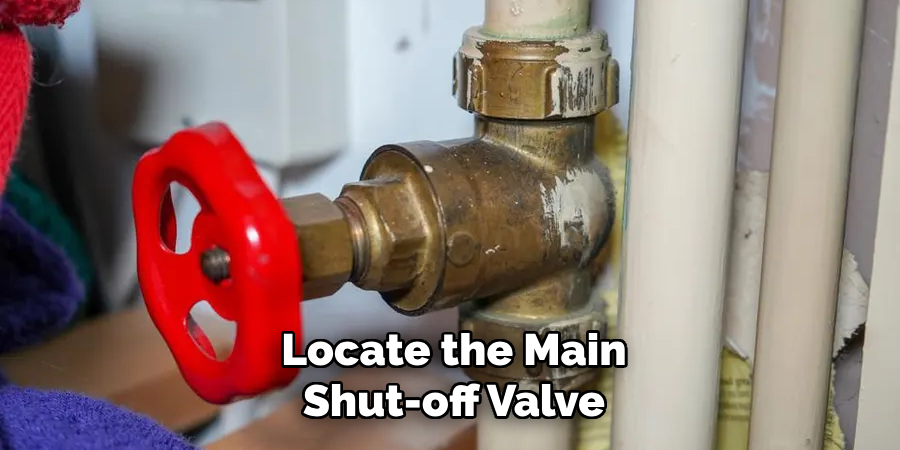
Step 2. Drain the Plumbing System:
After shutting off the main water valve, drain the plumbing system to remove any residual water from the pipes. Start by opening all faucets in the house, including sinks, bathtubs, and outdoor hoses, to allow water to flow out. Additionally, flush all toilets to remove water from the tanks and bowls. Once you’ve opened the faucets, run water through the lines until the flow stops.
Step 3. Add Antifreeze to Toilet Bowls and Traps:
To further safeguard your plumbing, add a non-toxic antifreeze specifically designed for plumbing systems. Pour antifreeze into each toilet bowl and the sink drains, which helps prevent any remaining water from freezing inside the traps. Make sure to use a product that is safe for this use, as traditional automotive antifreeze can be hazardous. This simple yet effective measure can protect against the risk of frozen pipes and potential damage during your absence.
Step 4. Insulate Exposed Pipes:
Identifying and insulating any exposed pipes is vital in preventing them from freezing. Start by inspecting your home for plumbing that runs through unheated areas, such as basements, attics, or crawl spaces. Once you’ve located these vulnerable sections, wrap them with pipe insulation sleeves or foam tape to provide an added protection against cold air. Pay particular attention to areas with inadequate heating or extreme temperature fluctuations. Taking this preventative measure can reduce the likelihood of frozen pipes and avoid the costly repairs associated with burst plumbing.
Step 5. Maintain a Consistent Temperature:
Maintaining a consistent temperature within your empty home is crucial to avoid the risk of frozen pipes. Set your thermostat to no lower than 55 degrees Fahrenheit (12.8 degrees Celsius) to ensure that the house’s interior remains warm enough to prevent the water in the pipes from freezing. If you’re concerned about energy costs during your absence, consider using a programmable thermostat to adjust the temperature to your preferences. Additionally, leave cabinet doors open in areas where plumbing is located, such as under sinks, to allow warm air to circulate the pipes. By controlling the temperature effectively, you can create a less hospitable environment for freezing and reduce the chance of burst pipes.
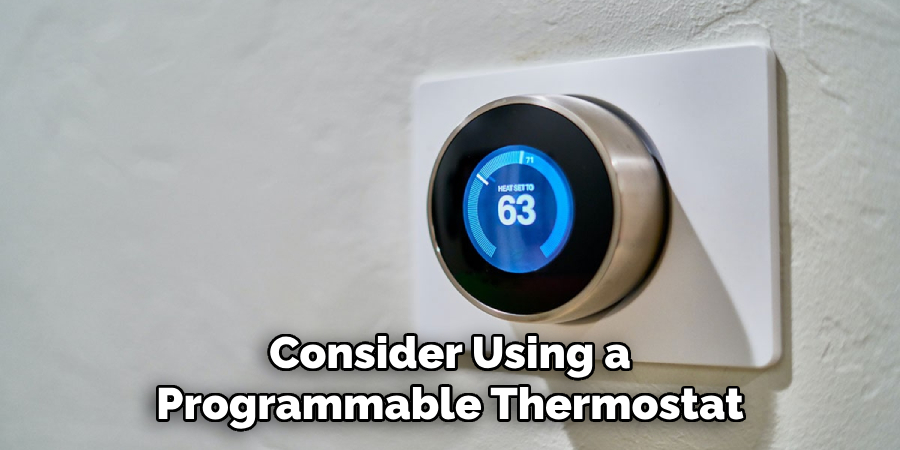
Step 6. Seal Cracks and Openings:
To further enhance the protection against frozen pipes, it’s essential to seal any cracks or openings in your home that may allow cold air to enter. Inspect areas around windows, doors, and where pipes enter the walls or floors. Use caulk or weather stripping to close gaps and prevent drafts that could lead to a drop in temperature around your plumbing. Additionally, consider insulating any nearby windows with removable film or thermal curtains to help maintain a warmer environment within your home. By addressing these potential vulnerabilities, you can significantly mitigate the risk of your pipes freezing during your time away.
Step 7. Use Faucet Covers:
Installing faucet covers is a simple yet effective way to protect outdoor faucets from freezing temperatures. These inexpensive insulating materials can be readily found at hardware stores and serve as a barrier against cold air. To use them, ensure that the faucet is turned off and then cover it securely, creating a tight seal. This precaution helps keep the faucet and the exposed pipes connected to it insulated, reducing the risk of freezing and subsequent damage during colder months. Remember to check on these covers periodically to ensure they stay in place and remain effective throughout the winter season.
Step 8. Let the Faucets Drip:
During freezing spells, allowing your faucets to drip slightly can help prevent the pipes from freezing. By keeping a small stream of water flowing, the pressure inside the pipes is reduced, making it less likely for ice to form. Focus on the faucets connected to exterior walls or those supplied by uninsulated pipes, as these are more susceptible to freezing. A steady drip from both hot and cold faucets can act as a safeguard, providing a continuous flow of water that reduces the chance of frozen lines in your plumbing system.
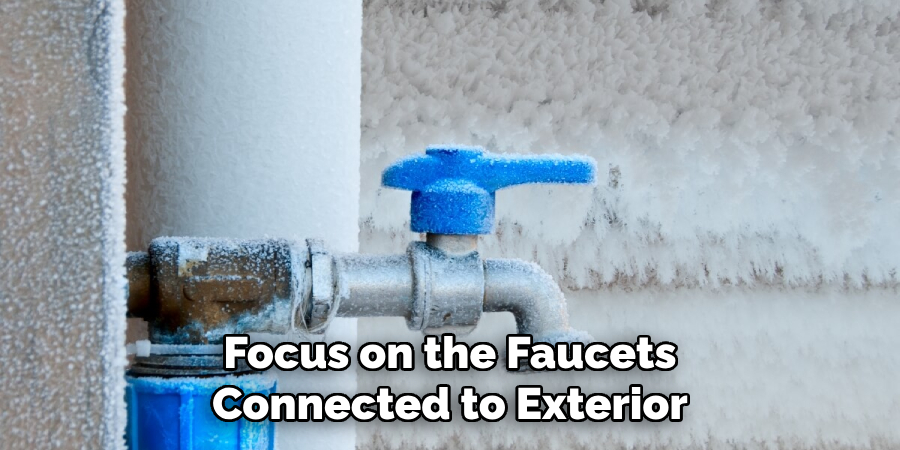
Step 9. Monitor Weather Conditions:
Keeping a close eye on weather conditions during the winter months is crucial for preventing burst pipes. Be especially vigilant during forecasts of extreme cold, snow, or severe weather warnings. If you anticipate a significant drop in temperature, consider taking additional precautions, such as temporarily increasing the home’s temperature or repeating the previously mentioned steps. Staying informed will enable you to react swiftly and take necessary actions to protect your plumbing before cold weather strikes.
Step 10. Arrange for Regular Checks:
If you plan to be away for an extended period, consider arranging for a trusted neighbor, friend, or a professional service to check your home’s plumbing system periodically. Having someone look in on your property can ensure that any issues—such as a sudden cold snap or unexpected leaks—are addressed promptly. This proactive approach can provide peace of mind, knowing that your home is being monitored and that any potential plumbing problems are caught before they escalate into costly repairs.
By following these steps and taking preventative measures, you can significantly reduce the risk of frozen pipes while you are away.
5 Things You Should Avoid
1. Ignoring the Thermostat: Avoid setting the thermostat to a safe temperature before leaving your home. Letting it drop too low can significantly increase the risk of your pipes freezing, leading to costly damage upon your return.
2. Skipping Insulation in Vulnerable Areas: Be aware of insulating hard-to-reach places or areas prone to cold drafts. Skipping insulation in attics, basements, and crawl spaces exposes these sections, making frozen pipes much more likely.
3. Underestimating the Cold Weather Alerts: Ignoring weather alerts and forecasts can be detrimental. Failing to take preemptive measures based on a predicted severe cold can lead to unexpected freezing incidents that compromise your plumbing.
4. Forgetting to Drain Outdoor Fixtures: Avoid leaving outdoor hoses and fixtures attached during winter months. Water trapped in these lines can freeze and cause damage, so always disconnect and drain outdoor plumbing before cold weather hits.
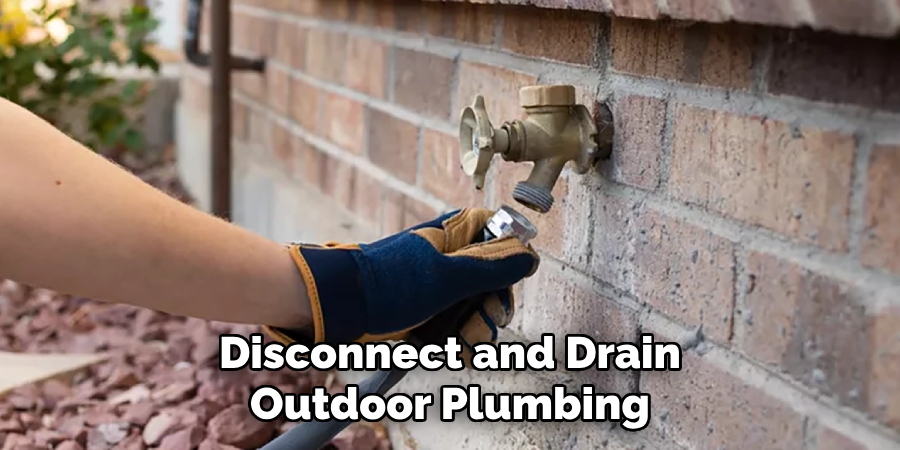
5. Neglecting Regular Property Checks: Make sure to coordinate regular checks of your vacant home. Relying solely on your precautions without monitoring can lead to missed signs of trouble, such as leaks or temperature drops that require immediate attention.
Conclusion
In summary, taking proactive measures to protect your plumbing can save you from costly repairs and significant headaches when you return to your empty home.
By ensuring a steady temperature, sealing cracks, utilizing faucet covers, allowing faucets to drip during extreme cold, and monitoring weather conditions, you can create a safeguarded environment that minimizes the risk of frozen pipes. Additionally, arranging for regular checks while you are away provides an extra layer of security by catching potential issues early.
Hopefully, the article on how to prevent burst pipes in an empty homes during winter has provided you with valuable steps to follow and will help you protect your plumbing no matter how long you are away. Stay prepared, stay informed, and enjoy your time away without worry!

